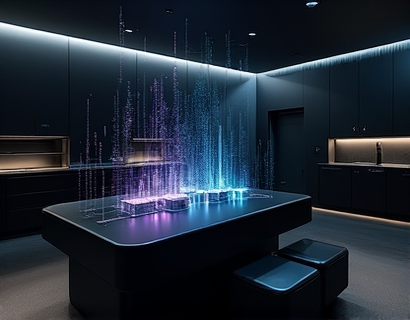Unlock Real-Time Engagement: Transforming Live Communication with Advanced AI Avatar Technology
The landscape of digital communication is rapidly evolving, driven by advancements in artificial intelligence and machine learning. One of the most exciting developments in this space is the emergence of advanced AI avatar technology, which is revolutionizing the way we engage in live presentations and virtual events. This technology brings lifelike, interactive characters to digital platforms, setting a new standard for immersive and memorable experiences. By integrating AI avatars into live communications, businesses and content creators can elevate their messages, making them more impactful and engaging than ever before.
AI avatars are not just static images or pre-recorded videos; they are dynamic, real-time entities that can interact with audiences in a natural and intuitive manner. These avatars are powered by sophisticated algorithms that enable them to understand and respond to user inputs, express emotions, and even adapt their behavior based on the context of the conversation. This level of interactivity transforms passive viewers into active participants, fostering a deeper connection with the content and the presenter.
The benefits of using AI avatars in live communication are numerous. Firstly, they enhance engagement by providing a more personal and relatable experience. Audiences are more likely to remember and engage with content that features a lifelike, interactive character rather than a traditional speaker or a recorded message. This increased engagement translates into higher retention rates and a more positive reception of the message being conveyed.
Secondly, AI avatars can overcome language barriers, making global communication more accessible. With real-time translation capabilities, avatars can speak multiple languages, ensuring that the message reaches a wider audience without the need for multiple translators or subtitles. This is particularly valuable for international businesses and organizations that operate across different regions and cultures.
Moreover, AI avatars can operate 24/7 without fatigue, providing consistent and reliable communication at any time. This is especially beneficial for businesses that need to maintain a constant presence or for events that span multiple time zones. The ability to have a virtual host or speaker available around the clock enhances the overall user experience and demonstrates a commitment to accessibility and convenience.
The technology behind AI avatars is rooted in advanced computer vision and natural language processing. Computer vision algorithms enable the avatar to interpret and respond to visual cues, such as facial expressions and body language, making interactions more natural and human-like. Natural language processing allows the avatar to understand and generate human-like speech, ensuring that conversations flow smoothly and coherently.
To create a seamless and immersive experience, AI avatars are designed with high-fidelity graphics and realistic animations. These avatars can mimic human movements and expressions with remarkable accuracy, thanks to advancements in 3D modeling and motion capture technology. The result is a virtual presence that feels authentic and engaging, drawing the audience into the communication process.
One of the key applications of AI avatar technology is in live presentations and conferences. Imagine a scenario where a company executive is delivering a keynote speech, but instead of being physically present, they are represented by a lifelike avatar. This avatar can interact with the audience, answer questions, and even navigate through the presentation slides, all in real-time. This not only saves travel costs and time but also allows for a more flexible and dynamic presentation style.
In the realm of virtual events, AI avatars can serve as hosts, moderators, or even performers. They can guide attendees through the event, introduce speakers, and facilitate Q&A sessions. The interactive nature of avatars ensures that participants remain engaged throughout the event, reducing the likelihood of disengagement that can occur with traditional virtual gatherings.
For content creators, AI avatars offer a powerful tool to enhance their storytelling and content delivery. Whether it's a live stream, a webinar, or a social media post, incorporating an AI avatar can make the content more compelling and shareable. The avatar can provide explanations, demonstrations, or even entertain the audience with interactive segments, all while maintaining a consistent brand presence.
To implement AI avatar technology effectively, it's essential to consider a few key factors. First, the quality of the avatar's graphics and animations is crucial for creating a believable and engaging experience. High-resolution models and smooth motion capture are necessary to avoid any jarring or unnatural movements that could break the immersion.
Second, the AI's ability to understand and respond to user inputs in real-time is vital. This requires robust natural language processing capabilities and a comprehensive knowledge base that the avatar can draw upon. The avatar should be able to handle a wide range of topics and questions, providing accurate and relevant responses that enhance the conversation.
Third, the integration of the avatar into existing platforms and workflows should be seamless. This involves ensuring compatibility with various devices and software, as well as providing intuitive controls for operators to manage the avatar's behavior and interactions. A user-friendly interface can significantly reduce the learning curve and make the technology more accessible to a broader audience.
As the technology continues to advance, we can expect even more sophisticated features and capabilities. For instance, emotional intelligence is an area of ongoing research, with the goal of making avatars more empathetic and relatable. By recognizing and responding to the emotional states of the audience, avatars can create a more personalized and empathetic connection, further enhancing the communication experience.
Another exciting development is the integration of AI avatars with augmented reality (AR) and virtual reality (VR) environments. In AR, avatars can overlay digital information onto the real world, providing interactive and context-aware experiences. In VR, avatars can create fully immersive environments where users can interact with virtual characters in a three-dimensional space, opening up new possibilities for education, training, and entertainment.
The potential applications of AI avatar technology extend beyond business and content creation. In education, avatars can serve as virtual teachers or tutors, providing personalized learning experiences and support. In healthcare, avatars can assist in therapy sessions, offering emotional support and guidance to patients. The versatility of AI avatars makes them a valuable tool across various industries and domains.
Despite the many advantages, there are also challenges and considerations to keep in mind when adopting AI avatar technology. Privacy and security are paramount, as the avatar may handle sensitive information and interact with users in personal contexts. Ensuring robust data protection measures and transparent privacy policies is essential to build trust and confidence in the technology.
Additionally, there is a need for ethical guidelines and standards to govern the use of AI avatars, particularly in scenarios where they may be perceived as replacing human interactions. It's important to maintain a balance between leveraging technology for convenience and preserving the authenticity and warmth of human connections.
In conclusion, AI avatar technology represents a significant leap forward in digital communication, offering unparalleled levels of engagement, interactivity, and accessibility. By integrating these advanced avatars into live presentations and virtual events, businesses and content creators can transform their communication strategies, creating more impactful and memorable experiences for their audiences. As the technology continues to evolve, the possibilities for innovation and application are vast, promising a future where digital and human interactions blend seamlessly.












